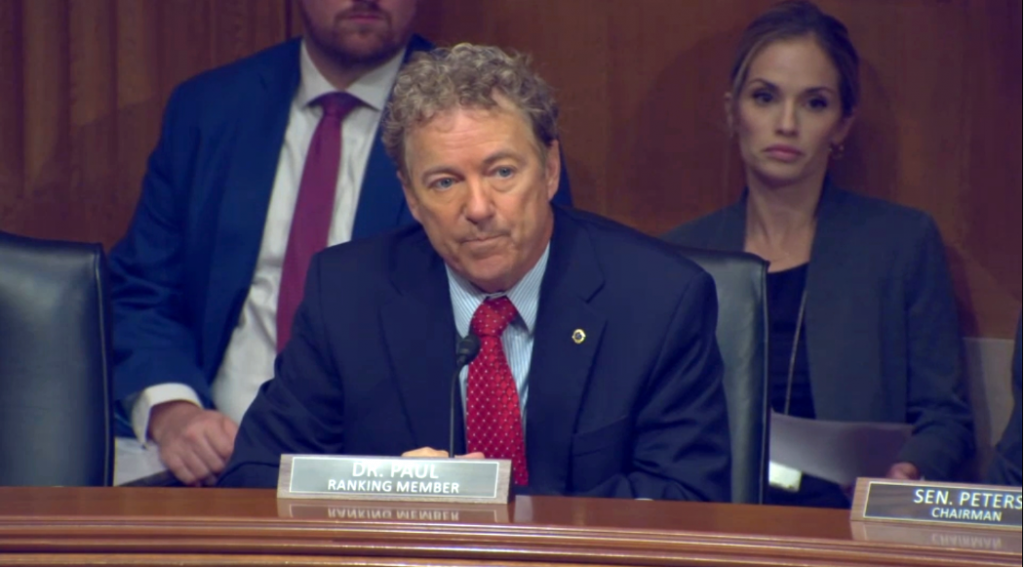WASHINGTON, D.C. – Today, U.S. Senator Rand Paul (R-KY), Ranking Member of the Senate Homeland Security and Governmental Affairs Committee, delivered opening remarks during a hearing titled “FASTA Implementation and Optimizing the Efficient Use of Federal Property.” During the hearing, Dr. Paul highlighted the current inefficiencies of the Public Building Reform Board (PBRB), created under the Federal Assets Sale Transfer Act (FASTA) with the objective of optimizing the management of federal civilian real estate and ensuring efficient utilization of government resources. Their ability to manage and sell off unnecessary real estate inventory has been stymied by bureaucracy and agency resistance, resulting in the Board unable to meet its sale goals year after year. The friction between the agencies has cost the taxpayers billions of dollars, and without effective reform, taxpayer dollars will continue to be wasted on maintaining these unused real estate assets.
Dr. Paul pointed out how the Government Accountability Office (GAO) has long identified federal real property management as one of the most prominent examples of government waste. With a staggering number of federal employees teleworking and the Biden Administration’s refusal to bring federal workers back to the office, government buildings nationwide have been left empty. Rather than reduce and sell unneeded buildings, federal agencies have clung onto their vacant properties and obstructed PBRB from carrying out its critical mission. Dr. Paul made it clear that in order for the PBRB to reach its goals and deliver maximum value to the American people, the private real estate experts within the PBRB must be allowed to identify cost-saving opportunities and sell excess federal property free from bureaucratic resistance.
View the Ranking Member’s opening statement here
Opening remarks as prepared can be found below:
In his book “Bureaucracy” the economist Ludwig von Mises characterized the federal bureaucracy as the “straight jacket” paralyzing individual initiative, innovation, and overall societal improvement. You don’t need to look any further than your two-hour wait at your local DMV to see this “straight jacket” in action.
In 2016, Congress passed the Federal Assets Sale Transfer Act, or FASTA, with the goal of reducing government waste and streamlining processes in federal property management.
FASTA created the Public Buildings Reform Board, which is composed of private sector experts in real estate and property management, to identify effective ways for the federal government to reduce unnecessary inventory of civilian real estate.
Federal real property management has been on the Government Accountability Office’s High-Risk-List for nearly 20 years. The continued failures of the Executive Branch to efficiently manage the federal real property portfolio was one of the driving reasons for the creation of the Public Buildings Reform Board.
Unfortunately, the bureaucracy’s resistance to the Board has resulted in its apparent underutilization. The friction between the Board, the Office of Management and Budget, and the General Services Administration has resulted in only $200 million in sales and the rejection of the Board’s first round submission in 2021.
The Government Accountability Office highlighted how the high value round had a goal of $500-$750 million in sales, and the first round had a goal of $2.5 billion in sales. The failure of the General Services Administration to meet these goals shows the administrative resistance to change and efficiency.
We should not be surprised that the bureaucrats running these government agencies are not as effective as the private market in managing their real property portfolios. The “bureaucratic straightjacket” is preventing efficient federal property management and costing the taxpayer billions of dollars. This is why the private sector expertise of the Public Buildings Reform Board is absolutely necessary.
COVID has further complicated the math for holding property. With the Biden Administration’s refusal to bring many federal employees back to the office, the need for the current square footage has been drastically reduced.
Instead of re-assigning the federal government’s space requirements, agencies are allowing employees to work from wherever their hearts desire while simultaneously hanging on to their empty properties.
Agencies – particularly the General Services Administration – need to identify, remediate, and sell excess real estate. There is still a lot of work to be done and the expertise of the Public Buildings Reform Board needs to be better utilized.
I want to thank each of the panelists for joining us today. I believe today’s discussion will be invaluable as we look to optimize the federal government’s real estate holding and management.
###
